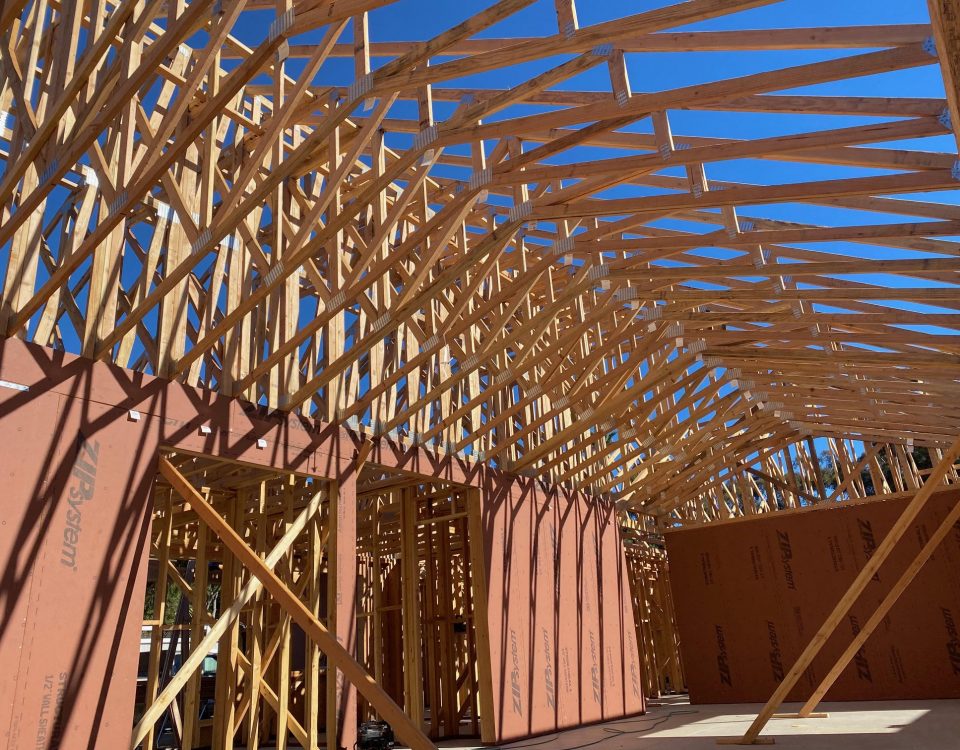Wood Truss Terminology

Trusses vs. Rafters: The Real Cost Breakdown
March 30, 2023
Gable vs. Hip: Which is Better for Truss Roofing?
June 15, 2023Many people have heard of wood trusses and know that they may save a great deal of time and money for builders on many different job types. Whether the construction involves a small home, a commercial building, or even a large apartment complex, trusses are often used to cut the cost of materials and labor compared to conventional framing. However, even though many people know that trusses save money, they may not understand the basics of what trusses are made of or how they work. In fact, many people think that a truss building is quite complicated and that trusses are extremely difficult to design and build.
In reality, trusses are relatively simple structures that, nevertheless, are incredibly versatile and functional. The basics of a truss roof allow for almost limitless variations, making roof trusses one of the most adaptable components on a construction job.
What Is A Wooden Roof Truss and How Is It Built?
A wooden roof truss is, at its simplest, are pieces of wood connected with metal plates and either nails or screws. Some form of truss construction has actually been used for thousands of years, but the modern truss has been produced since about the 1960s. By making trusses very uniform and easy to create, mass production was made possible.
Wooden trusses that are connected with metal plates are by far the most common type used in residential applications. The lumber used is typically 2 x 4 or 2 x 6 timber, often Doug Fir or Spruce Pine.
The Parts of the Truss
A truss generally has three sides which make up its perimeter, although specialty trusses may have more. The typical truss has a triangular shape made of members called “chords.” Between these, a varying number of pieces called “webs” connect each of the chords together. These are all held together with toothed metal plates that are pressed or screwed in place. Once a truss is fabricated and put together, it is incredibly strong. The metal plates provide security and anchoring, while the wood allows for a certain amount of flexibility, meaning that trusses can bend and flex to a degree in high winds or under stress, avoiding breakage. Truss roofs often last for many years thanks to this durability.
Trusses are typically categorized two ways: as parallel chord trusses, which are used in flooring or for flat roofing; and in the more common pitched chord trusses, which are used for sloped roofing. With pitched chord trusses, variations in the angles of the members can create any roof pitch needed, allowing builders a wide range of creativity in roofing options.
If you want to know more about truss roofing or flooring, the professionals at Stone Truss are happy to help! Give us a call today to learn more about how we can help you save money and time on your next building project.


